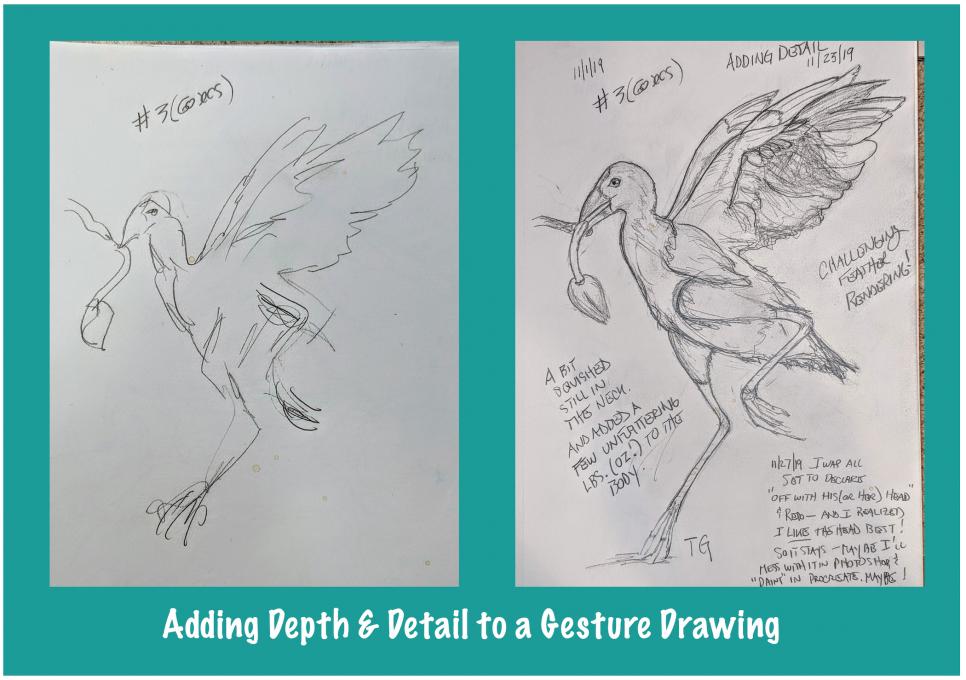The Cornell Lab Bird Academy › Discussion Groups › Nature Journaling and Field Sketching › Giving Your Drawings Depth
-
I found this exercise to be somewhat of a turning point for me in this class because I came to realize that my 60 second gesture drawing was VERY useful in rendering the subject at a later time. In the past, I may have considered quick sketches (more like scribbles!) as minimally useful and more of a "throw-away" drawing. After doing this exercise I feel I can trust the gesture phase to be a foundation for further development, especially if I'm choosing from a series of gesture drawings. Some of the other students commented that they felt they had captured something special in their gesture drawings (bring out some of the vibrancy, personality, even Life of their subject). I'm finding the "negative space" technique helps with critical portions of a drawing as does "seeing and drawing shapes" instead of say an "actual feather" (which is overwhelming in its detail!) gives me the confidence to keep working on the drawing. One challenge I've found, that was almost comically apparent to me was that I put considerable detail into the head of this bird before moving on to the body and when I was approaching finishing, I realized I had the proportions wrong and the bird looked "off" to me. But I really liked the head (especially area around and including eye) and didn't want to erase it. For kicks, I opened the image in Photoshop and made the head bigger. YES! I was right about the proportions. I left it as it was here, and in my notebook, wanting to archive the process and remember the lesson learned...they'll be plenty more bird drawings in my future! AND: This subject didn't originally have a discussion section and I reached out to Liz to inquire if it could be added. Liz agreed it was a useful addition and quickly added the opportunity for us to share (so come on, SHARE!) Thank you Liz--your "live" presence makes this course Extra Special!

-
Tom, thank you for the detailed explanation of your learning. It is very helpful for me to understand how the different techniques can come together with more practice. I realized my gesture drawings are too small to rework, so I am going to try again.
-
Read More:
